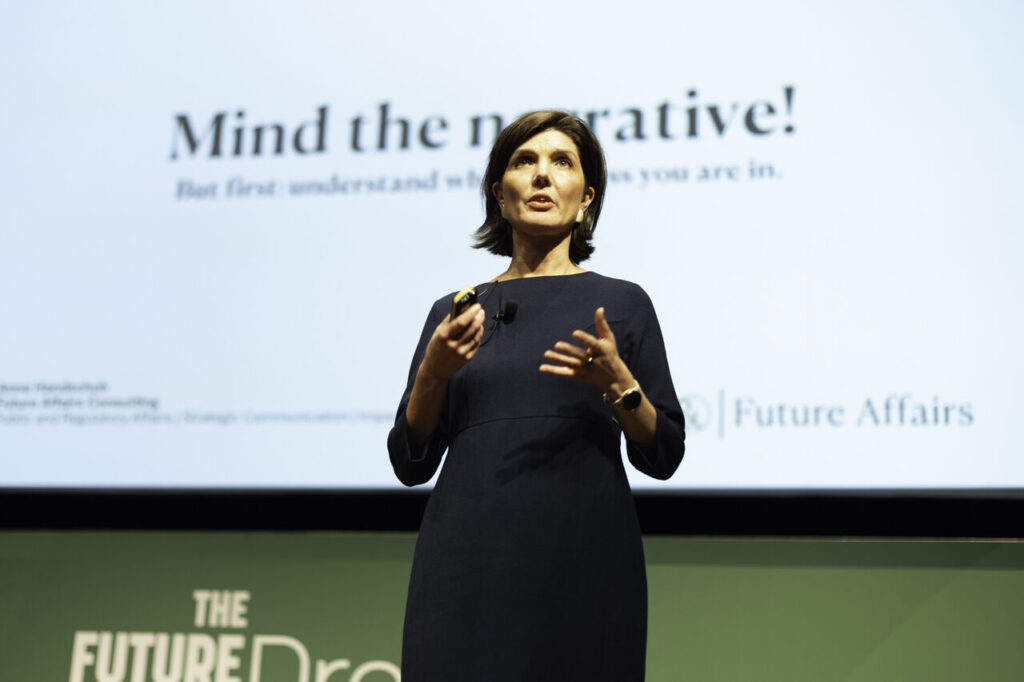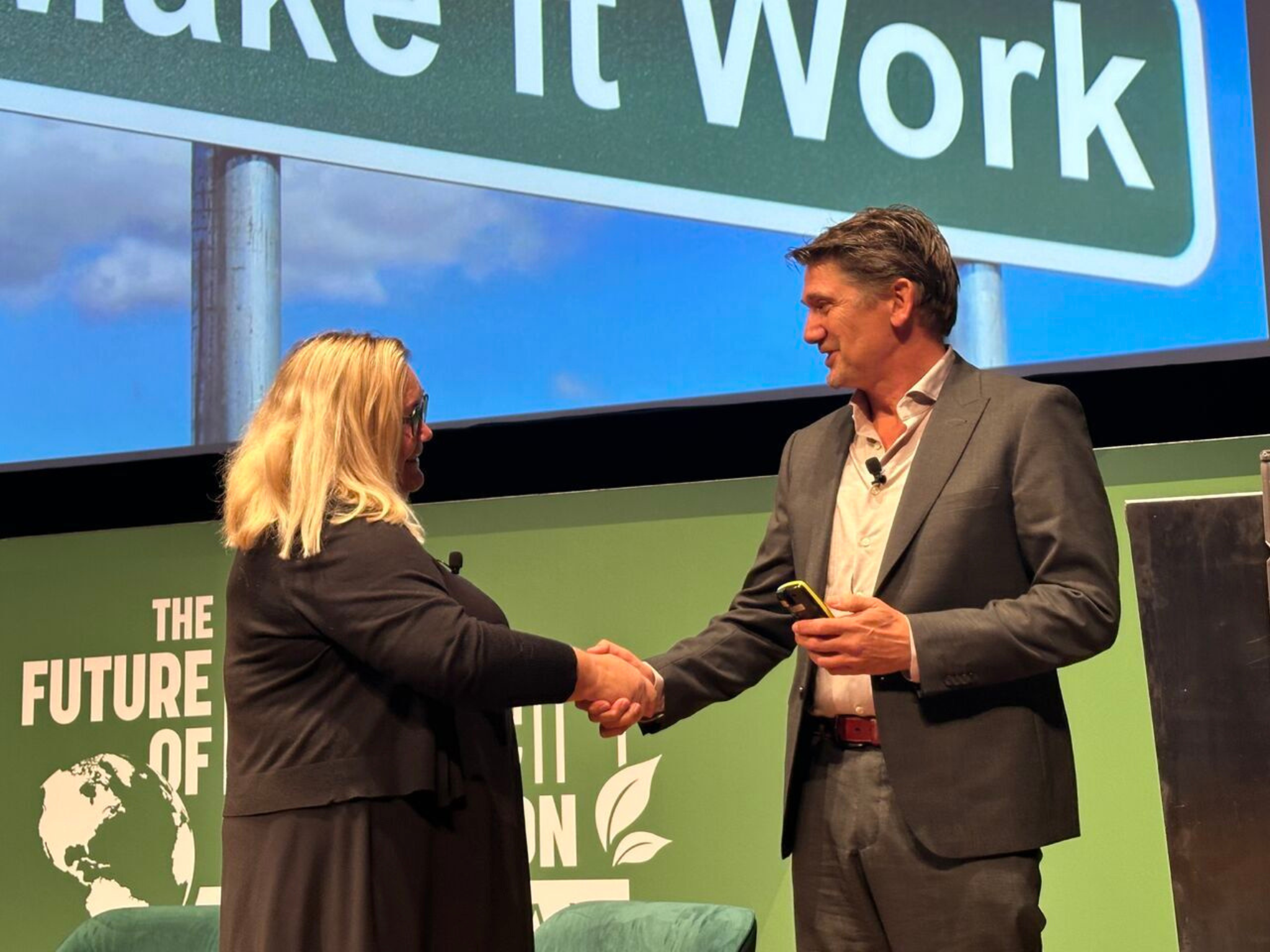8 Things We Learned at the Future of Protein Production Event in Amsterdam
6 Mins Read
“Change starts here,” Ira Van Eelen, co-founder at KindEarth.Tech and RESPECTfarms noted on the opening day of the Future of Protein Production Amsterdam 2024. With over 500 delegates, 45 exhibitors, and two packed days of panels, keynotes, and workshops, the event was a deep dive into the future of sustainable food production.
Green Queen was there to witness the cutting-edge ideas shaping this future and hear from the innovators, regulators, and entrepreneurs leading the charge. Here’s what we learned about the shifts reshaping alternative proteins – and why they matter.
1) Processing, not products
The event showcased a shift from end products to enabling technology, highlighting a new focus on scaling production. As the industry moves from lab to large-scale, managing costs while optimising processes has become the biggest challenge – especially as most companies are working to cut costs as they do so. Many companies are operating more cautiously now that food tech is no longer the trendy sector du jour, spending less on their own Capex and instead seeking external solutions – like ERIDIA’s nanosecond pulsed electric field technology, or Ziemann Holvrieka’s massive, industrial-grade tanks.
And, for several companies, the end goal isn’t necessarily to serve consumers. Robin Simsa highlighted this perfectly when he shared that Revo Foods’ longer-term aim is to supply its unique 3D printing technology to other producers, but first has to prove that it works with products in the market – hence the company’s ongoing retail partnerships with the likes of REWE, BILLA, SPAR and EDEKA. This shift from consumer-facing products to process-oriented B2B solutions could mark a key change in the alt-protein industry.
2) New media for cellular agriculture
To meet the high costs and volume needs of cell-based production, several companies are developing innovative, low-cost media. Susanne Wiegel, Head of Alternative Protein Program at Nutreco, predicted that, by 2040, the cell ag industry’s media needs will “leapfrog from niche production to commodity-scale demand”.
With its first dedicated cell feed powder plant in Boxmeer, Nutreco is creating high-volume, low-cost, food-grade media that it sees as critical for the future of cellular agriculture. Newcastle University spinout MarraBio is developing ultra-stable, low-cost alternatives to the extracellular matrix and growth factor proteins used in cultivated meat production, and Belgian startup FlyBlast is using black soldier flies to create human insulin, view a view to then creating bovine and porcine insulin, so removing the cost and ‘ick factor’ barrier of human insulin for cultivated meat production.
3) Leveraging AI to scale production
It’s becoming clear that AI could help to optimise everything from ingredient selection to production processes, supporting alt protein companies to reduce costs and improve their scalability. Sam Tucker from OpenPaws described it as “enabling smarter decision-making at every stage.” Sebastian Blum of Beckman Coulter Life Sciences emphasised that AI can improve bioprocesses in unprecedented ways—a claim demonstrated by Multus, which uses machine learning to optimise media formulations, making their production more efficient and affordable.
Tucker also outlined that, in the longer term, AI could enhance collaboration across sectors, bringing together innovators, regulators, and producers to strengthen the sustainable food ecosystem. In fact, a panel led by Thomas Cresswell of Melt&Marble concluded that the next decade will see AI-driven production processes playing a central role in shaping new protein technologies.

4) Meeting consumer expectations with personal benefits
There was a strong message throughout the event that consumer interest in alt-proteins centres more on personal benefits than environmental impact. Head of Corporate Social Responsibility at Sodexo Netherlands, Marloes van der Have, explained that in their foodservice facilities consumers are making choices based on financial triggers, not necessarily the environment. “While some may have an ideal view about looking after the environment, when it comes to it, it’s much more about personal benefit – so taste, health, and cost – than the bigger picture of climate impact.”
The emphasis on personal benefit over environmental impact is a valuable insight for industry leaders. Aligning consumer messaging with what truly resonates—taste, health, and cost—could redefine how alternative proteins are marketed, helping the sector grow without losing sight of its ultimate sustainability goals.
5) Tech for taste and texture
While health drives consumer interest in plant-based eating, taste is what seals the deal, according to Catherine Caro, Global Diet & Health Manager at Unilever. This insight is central to development at The Vegetarian Butcher.
Robin Simsa talked about Revo Foods’ 3D Food Structuring Tech, which allows it to produce unique, flaky, and juicy textures, while Dr Lily Nur Sulaiman, Senior Research Scientist at THIS, also shared insights into the company’s mission to deliver nutritious and delicious plant-based food while tackling the common barriers around health and protein quality. THIS uses high-protein ingredients like concentrates and isolates, mixing protein sources to enhance the amino acid score, and its protein extraction processes are designed to improve protein digestibility by removing anti-nutrients.
6) Doing tastings the right way
At some point, all novel food companies will host public tastings (like Vital Meat just did in Singapore). Van Eelen underlined just how important it is to do them the right way – after all, these lay the groundwork for broader consumer acceptance. That is, by avoiding elements that could distract from the product people are there to taste (too much breading, strong herbs, overpowering spices), by allowing people to enjoy food together, as they would in a restaurant, and by honouring the chef in the process. “People believe in chefs, and what they can do. Don’t hide them at the back or make them wait for journalists or a lab tour. Make them the star of the show, and so the food will become the star of the show.”

7) Shifting the narrative: mindset matters
Some of the speakers and panellists suggested that alt proteins launched with the wrong pitch; there was too much noise about the morals and the environment, when instead the focus should be on the food and potential European sovereignty for novel technology. As Anna Handschuh, Founder and Managing Director at Future Affairs, put it: “Being right doesn’t mean you win.” Instead, understanding “what business you are actually in” and crafting compelling narratives that resonate with consumers to drive the widespread adoption of alternative proteins are important here.
8) Collaboration is key
BlueNalu founder Lou Cooperhouse asked: “What if 1+1=3? Then perhaps 1+1+1 could equal 7 or maybe 9.” Being greater than the sum of our parts was the thread that pulled together the whole conference, and the realisation that, as the industry matures and recalibrates through difficult times, working together will become the rule, not the exception. The sentiment of collective effort resonated across companies and sectors, with partnerships like that between Formo and Those Vegan Cowboys serving as examples of how collaboration and open innovation can accelerate scaling.
This collaboration could even extend to regulatory bodies. Cedric Verstraeten, CEO at revyve, stated that, when it comes to regulations: future of protein production “There is no EU,” describing how the different countries’ attitudes and approaches to novel foods are in no way unified – let alone across the world. Perhaps the industry should advocate for internationally accepted standards and categorisations; after all, a unified approach to approvals could only serve to speed up the process and inspire consumer trust.
Jasper Snoek from Fair Capital Impact Fund provided an investor’s perspective, highlighting how blended financing models can help companies scale in a capital-intensive environment. He stressed the need for building strong coalitions that transcend political divisions to drive real progress in alternative proteins. The message was clear: shared resources and knowledge will be crucial in driving progress.
This theme of collaboration resonated throughout the event, suggesting that the future of protein production might be a collective effort where joint innovation creates exponential growth.
After all, as Those Vegan Cowboys’ Will van den Tweel put it: “It’s impossible for one player to capture what is a $1 trillion dairy market. Together, we are better.”




